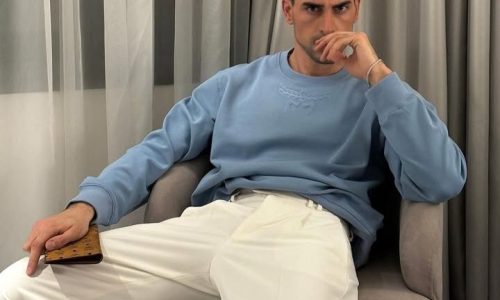
Minimalism to Maximalism: Fashion’s Dual Identity in 2025
Fashion in 2025 embodies a fascinating duality that captures the spirit of our times. On one side lies minimalism, celebrated for its clean lines, subtlety, and understated elegance; on the other is maximalism, thriving on bold patterns, vibrant colors, and elaborate detailing. This juxtaposition reflects a cultural tension between simplicity and extravagance, restraint and abundance. As society navigates complexities ranging from environmental concerns to digital expression, these two contrasting styles simultaneously fulfill different desires and emotional needs. Understanding this coexistence reveals much about the evolving identity of fashion in the mid-2020s.
The minimalist movement continues to appeal to those seeking calm, clarity, and timelessness in their wardrobes. Rooted in the philosophy of “less is more,” minimalism emphasizes quality over quantity, favoring versatile garments crafted from sustainable materials. It champions function, refined tailoring, and neutral palettes. In an era increasingly concerned with sustainability, minimalist fashion promotes mindful consumption by encouraging purchases that endure beyond passing trends. The appeal lies in the ability to create a polished, effortless look that transcends seasons and fluctuating fads.
Conversely, maximalism offers an exuberant counterpoint, inviting self-expression through flamboyant silhouettes, eclectic layering, and vivid hues. It resonates with individuals eager to embrace joy, creativity, and individuality in their attire. Maximalist fashion celebrates uniqueness by blending various textures, prints, and cultural references. This approach has found fresh vitality in the digital age, where social media platforms provide a stage for bold experimentation and storytelling through style. Maximalism’s resurgence also mirrors a broader societal desire for optimism and escape from uniformity.
The coexistence of these divergent aesthetics in 2025 is a testament to fashion’s capacity to accommodate diverse identities and emotional states. It allows wearers to choose how they present themselves according to mood, occasion, or personal philosophy. Moreover, many contemporary designers and brands blur the boundaries between minimalism and maximalism, creating hybrid collections that combine simplicity with intricate details. This fusion underscores the fluid nature of modern style and the rejection of rigid categorization.
As fashion embraces both extremes, it also grapples with the underlying issues driving these preferences. Minimalism’s sustainability ethos aligns with urgent calls to reduce waste and environmental impact, reflecting a conscientious mindset. Maximalism, meanwhile, challenges conventional norms by promoting inclusivity, cultural celebration, and the democratization of fashion. Together, they represent complementary forces shaping a future where individual choice and ethical responsibility coexist harmoniously.
The Philosophy and Origins of Minimalism in Contemporary Fashion
Minimalism as a movement emerged in the mid-20th century as a reaction against excessive decoration and consumerism. In fashion, it crystallized through designers who valued simplicity, clean cuts, and neutral color schemes. This aesthetic gained prominence for its focus on form, fabric, and function, stripping away unnecessary embellishments. Over time, minimalism evolved from an avant-garde statement to a mainstream style embraced worldwide. Its principles resonate strongly in 2025 amid heightened awareness of environmental sustainability and economic mindfulness.
The modern minimalist wardrobe prioritizes staple pieces that can be mixed and matched effortlessly. Natural fabrics such as organic cotton, linen, and wool are preferred for their durability and environmental benefits. Silhouettes emphasize balance and proportion, avoiding excess volume or complicated constructions. Minimalism in 2025 is also about thoughtful design—garments engineered to last and transcend fleeting seasonal trends, encouraging a slower fashion cycle. The philosophy extends beyond aesthetics to encompass a lifestyle centered on intentionality and quality.
This approach offers numerous practical advantages. Minimalist outfits simplify daily dressing decisions and reduce clutter, which many consumers find liberating. The focus on versatility means fewer purchases over time, aligning well with eco-conscious values. By 2025, many leading fashion houses and emerging brands have embedded minimalist principles into their core ethos, proving that elegance and sustainability can coexist beautifully.
Maximalism’s Bold Resurgence and Cultural Significance
Maximalism, historically associated with opulence and excess, has experienced a vibrant revival in recent years. It rejects minimalism’s restraint in favor of exuberance and theatricality. In 2025, maximalism is a powerful form of self-expression, especially among younger generations who use fashion as a canvas for identity exploration. This style is characterized by rich textures, bold patterns, statement accessories, and vibrant color palettes that defy conventional matching rules.
The resurgence is fueled by cultural diversity and the democratizing power of social media platforms, where individual creativity can shine globally. Maximalist fashion draws inspiration from various traditions and artistic movements, blending cultural motifs in imaginative ways. It champions inclusivity by welcoming all body types, genders, and ethnic backgrounds, using clothing as a medium to celebrate differences rather than conform to norms.
Maximalism’s theatrical nature also serves as a counterbalance to the uncertainties of the modern world. Wearing bold, attention-grabbing garments can be an act of empowerment, fostering confidence and joy. Designers increasingly create collections that embody storytelling and fantasy, inviting consumers to escape routine and embrace creativity through their attire.
How Technology Facilitates the Balance Between Minimalism and Maximalism
Technology in 2025 is pivotal in enabling both minimalist and maximalist expressions. Advanced design software and digital prototyping allow designers to experiment with shapes and details more efficiently. For minimalism, 3D knitting and seamless garment construction optimize fabric use, reducing waste while maintaining sleek aesthetics. Smart textiles enhance minimalist pieces with functionality such as temperature regulation or stain resistance without compromising simplicity.
On the maximalist side, digital printing and embroidery machines facilitate intricate patterns and vibrant colors at scale. Augmented reality apps empower consumers to visualize bold outfits before purchasing, reducing uncertainty and returns. Artificial intelligence curates personalized style recommendations that can accommodate both minimalist and maximalist preferences, encouraging hybrid wardrobes.
Blockchain technology also enhances transparency, reassuring shoppers that their chosen pieces—whether minimalist or maximalist—are ethically produced. This fusion of technology and fashion fosters innovation that respects environmental and social concerns while expanding creative possibilities.
Conclusion
In conclusion, the coexistence of minimalism and maximalism in 2025’s fashion landscape highlights an extraordinary duality that reflects broader societal values and individual desires. This dynamic interplay allows for an unprecedented level of personal freedom in how people choose to express themselves through clothing, whether by embracing the calm sophistication of minimalism or the exuberant creativity of maximalism. Rather than competing forces, these two aesthetics enrich the fashion world by offering versatile options that cater to diverse moods, occasions, and philosophies.
Minimalism’s enduring appeal lies in its sustainable ethos and timeless elegance, promoting mindful consumption and thoughtful design that respects both the environment and the wearer’s need for simplicity. Maximalism’s bold resurgence, on the other hand, celebrates cultural diversity, inclusivity, and the joyful exploration of identity, offering a colorful escape from monotony and conformity. Together, they represent the full spectrum of contemporary style, united by a shared commitment to innovation and authenticity.


